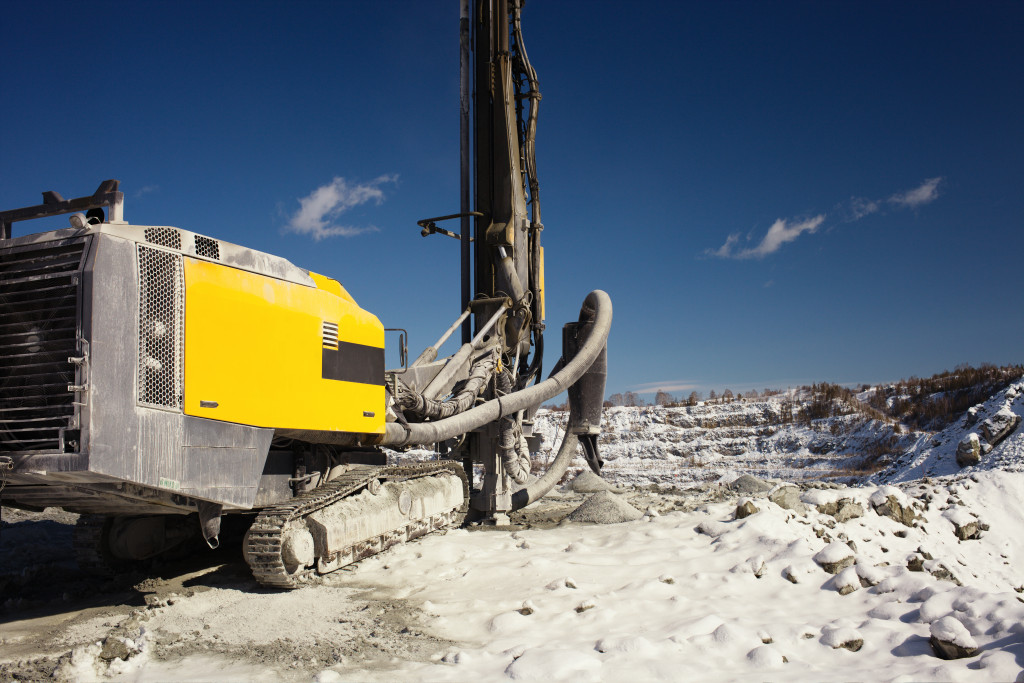- Mining operations must prioritize worker safety, enforce safety regulations, and implement comprehensive training.
- Efficient equipment utilization, including regular maintenance and the latest technology, boosts productivity.
- Environmental protection is crucial, involving compliance with regulations, land reclamation, and utilization of renewable energy.
- Sustainable and profitable mining balances financial benefits with safety and environmental impact considerations.
Given the ever-present demand for precious metals, rare earth elements, and resources like coal, mining can be an enormously lucrative venture. As per Statista, the total operating profit margin of the global mining industry hovered around 16%, demonstrating the profitability of well-managed mining operations. Furthermore, precious metals like gold have seen significant price increases on global markets; from 2000 to 2020, the price of gold increased by approximately 496.66%, as reported by Macrotrends. This shows the financial potential of mining and the enduring value of the resources extracted in the process.
However, ensuring a smooth mining process requires careful consideration of various factors. There will be plenty of factors to consider regarding the mining process. However, these priorities will take precedence:
Safety Regulations

The safety of workers is paramount in mining operations. Mining can be a high-risk industry, with dangers including cave-ins, explosions, harmful dust, and heavy machinery accidents. Therefore, adherence to safety regulations can reduce risks, prevent injuries, and save lives. A few key safety strategies include implementing comprehensive safety training programs to keep workers informed about potential dangers and how to avoid them, enforcing the use of personal protective equipment (PPE), which might include hard hats, safety glasses, high-visibility clothing, and steel-toed boots, and conducting regular risk assessments to identify and mitigate potential hazards.
Additionally, installing high-quality ventilation systems can mitigate the risk of airborne pollutants. In contrast, installing practical communication systems can ensure workers can quickly inform others of any safety concerns or incidents. Regular maintenance and checks of all machinery and equipment is another crucial aspect of ensuring safety.
Equipment Utilization
Proper equipment utilization plays a significant role in enhancing mining operations’ efficiency and productivity. Ensuring that mining machinery and tools are available and functioning optimally is essential to avoid unnecessary delays, costly repairs, and prolonged downtime is essential. Here are some of the critical aspects of equipment utilization:
Regular Maintenance
Regular maintenance is crucial to keep mining equipment in good working condition and extend its lifespan. It involves routine inspections, minor repairs, and adjustments to prevent more significant issues in the future. Implement regular maintenance schedules to ensure every piece of equipment is checked and serviced as required.
Replacement of Worn-out Parts
Over time, mining equipment parts can wear out and become less efficient or potentially hazardous. It’s essential to replace these parts promptly to prevent machinery breakdown and ensure the equipment’s optimal performance. A system that monitors wear and tear can help determine when details need to be replaced. You must also partner with vendors and suppliers who can provide quick delivery services for mill liners. Those features are often crucial to the efficiency of any mining operation.
Use of Latest Technology
Implementing the latest technology can significantly improve mining operations. For instance, predictive maintenance technologies can help identify potential equipment problems before they become serious, thereby preventing downtime and repair costs. Similarly, automation technologies can improve efficiency and safety.
Training of Operators
The proficiency of operators impacts equipment utilization significantly. Skilled and knowledgeable operators handle equipment more efficiently and spot potential problems earlier. Regular, ongoing training programs ensure operators are updated with the latest operating procedures and safety protocols.
Environmental Protection

Environmental protection is another crucial aspect that mining operations must prioritize. Mining activities inevitably impact the environment, altering landscapes and ecosystems and sometimes leading to considerable pollution. Therefore, it is paramount to implement and adhere to sustainable mining practices to minimize these impacts.
Mining companies should ensure compliance with all environmental regulations and strive for a balance between their operations and the preservation of the environment. This involves conducting thorough environmental impact assessments before embarking on any mining project to identify and mitigate potential environmental risks.
Methods such as land reclamation and rehabilitation should be employed post-mining to restore the environment. This process involves stabilizing the landscape, removing hazardous materials, and reintroducing native vegetation. Recycling and proper waste disposal are also essential to limit the amount of waste produced during mining operations.
In addition, adopting cleaner production processes and utilizing renewable energy sources can significantly reduce the carbon footprint of mining operations. By taking these steps towards environmental protection, mining companies can not only fulfill their responsibilities towards the environment but also improve their public image, earn the trust of communities, and ensure the long-term sustainability of their operations.
Final Thoughts
To ensure profitable and sustainable mining operations, operators must prioritize the safety of personnel, efficient utilization of equipment, and environmental protection. By planning for these factors and implementing appropriate strategies to address them, companies can reap the financial benefits of mining while minimizing their environmental impact.
